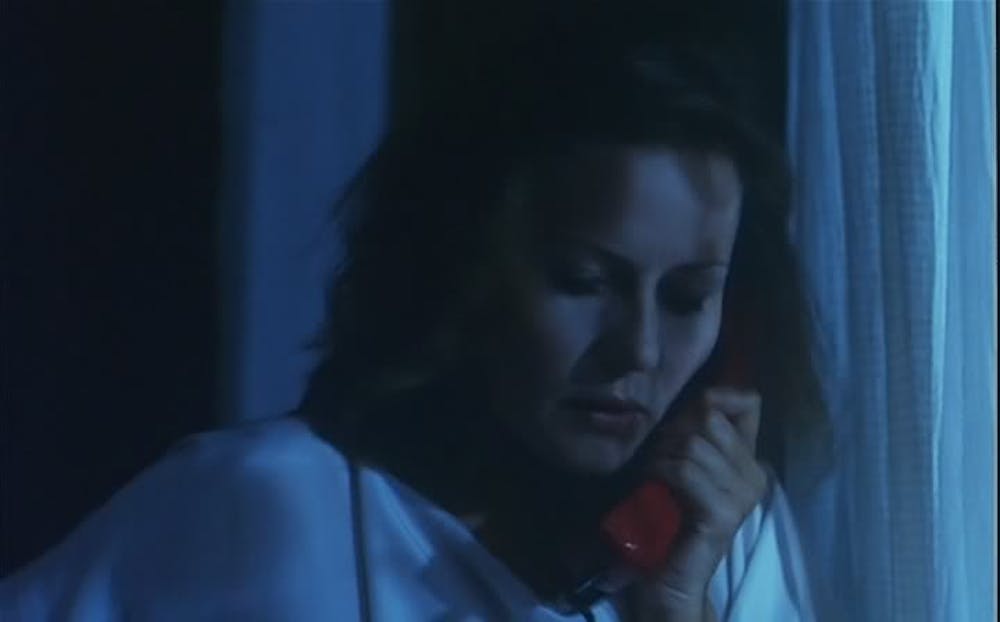A confession: I couldn't make it all the way through. Not for lack of trying, it was just too busy of a weekend. But four hours was long enough time to get a taste of this melancholic masterpiece, just rereleased by the Criterion Collection in all its dreary late–Communist glory two months ago.
Dekalog is Krzysztof Kieślowski's magnum opus, created in 1989 for Polish television. The ten–episode series, also known as The Decalogue, is modeled after the Ten Commandments in both theme and structure (yes, it's ten hours long). Even though it's called a television series, it views more like ten medium–length films, as each vignette stands alone without connection to the others.
Each movie, Dekalog I–X, revolves around a housing project in Warsaw. The huge gray buildings loom over the surrounding blocks, starting in their standardization and chilliness (also strangely reminiscent of the high rises?). None of the characters interact with characters from another chapter, although they do walk in and out of each other's stories as background extras and elevator ride companions. Kieślowski employed nine different cinematographers to magnify this difference in depth and style.
Dekalog I follows a boy named Paweł and his professor father after the death of his mother, as they pass the days computing physics problems on computers. This precocious youngster created a program of his mother's schedule so he can track her former daily activities throughout the day, while discussing the meaning of death and God with his aunt. This first chapter in the season focuses on the limits of blind faith in science, and the ways in which tragedy can shake these deeply held convictions.
It's important to note that each film doesn't comment on an exact commandment, instead speaking to the morality of all ten as a whole. While some might have a direct message like the science vs. God commentary that matches up with the First Commandment's forbiddance of idolatry, it becomes constraining to search for the distilled Mosaic Law in each of the pieces.
Dekalog II centers on a woman whose husband is deathly ill, who must choose to abort her lover's baby or keep it and raise it. And her decision rests on the judgment of the doctor who lives a floor below her in the apartment block, to predict if her husband will live or die.
Dekalog III follows a woman and her ex–lover on Christmas Eve as they search for her missing husband and fail to reignite any part of their former relationship. Dekalog IV has this same familial melancholia, as a young girl in drama school discovers a letter written by her deceased mother that calls into question the blood relation of her supposed father.
My own viewing experience gets into the more difficult logistical details of screening Dekalog. What is the best way to watch a ten–hour project? While it was shown on television in its native country and at several international film festivals, it never had a wide American release and wasn't available on tapes in the U.S. until the new millennium. The Philadelphia Film festival took one approach, with breaks after every two chapters, including longer ones for lunch and dinner. But in entirety, this constitutes a 12–hour marathon, one barely attempted by even the most daring of cinephiles, that begins to impede on one's enjoyment of each chapter. The pieces are all relaxing and gorgeous to watch in their details that something seems lost in viewing them Breaking Bad Season 6–style.
All of the films have an unshakeable gloom, magnified by the cookie–cutter landscape of a Poland on the brink of a democratic transition away from communism. The project is personal, not political, however, seen through the lens that seems almost documentarian with its naturalistic cinematography and beautiful grit. In fact, the film is so humanistic in its depictions of social struggles that it almost seems alien, too truthful to be true. And that's probably why I'll shell out the $70 so I can watch the last six chapters with more than a ten–minute break between each.







